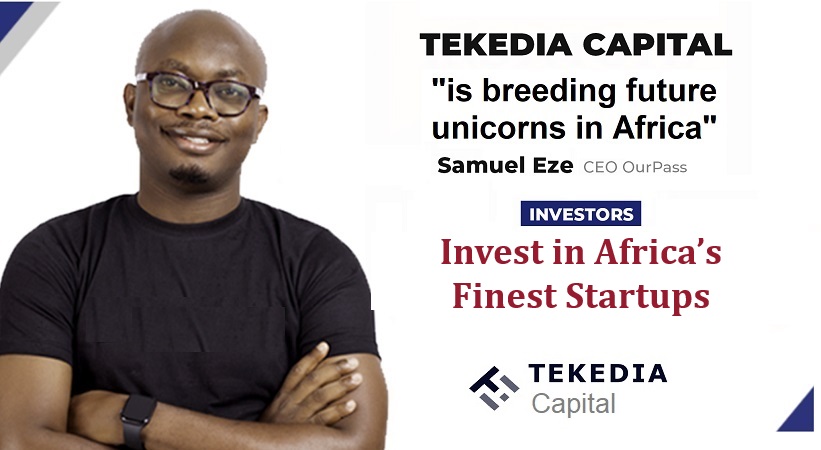News
10 migliori criptovalute di aprile 2024 – Forbes Advisor

Nota editoriale: guadagniamo una commissione dai collegamenti dei partner su Forbes Advisor. Le commissioni non influenzano le opinioni o le valutazioni dei nostri redattori.
Da Bitcoin ed Ethereum a Dogecoin e Tether, ci sono migliaia di criptovalute diverse, il che può renderti travolgente quando inizi per la prima volta nel mondo delle criptovalute. Per aiutarti a orientarti, queste sono le 10 migliori criptovalute in cui investire in base alla loro capitalizzazione di mercato o al valore totale di tutte le monete attualmente in circolazione.
Le migliori criptovalute da acquistare ora
1. Bitcoin (BTC)
- Capitalizzazione di mercato: 1,3 trilioni di dollari
- Rendimento anno su anno: 128%
Creato nel 2009 da Satoshi Nakamoto, bitcoin (BTC) è la criptovaluta originale. Come con la maggior parte delle criptovalute, BTC funziona su a blockchaino un registro che registra le transazioni distribuite su una rete di migliaia di computer. Poiché le aggiunte ai registri distribuiti devono essere verificate risolvendo un puzzle crittografico, un processo chiamato prova di lavoro, bitcoin è tenuto al sicuro e al riparo dai truffatori.
Il prezzo di Bitcoin è salito alle stelle poiché è diventato un nome familiare. Nel maggio 2016 potevi acquistare un bitcoin per circa $ 500. A partire da maggio. Il 7 settembre 2024, il prezzo di un singolo bitcoin era di circa $ 63.540. Si tratta di una crescita del 12.608%.
Imparentato: Come acquistare Bitcoin
2. Ethereum (ETH)
- Capitalizzazione di mercato: 369,0 miliardi di dollari
- Rendimento anno su anno: 65%
Sia una criptovaluta che una piattaforma blockchain, Ethereum è uno dei preferiti dagli sviluppatori di programmi per le sue potenziali applicazioni, come i cosiddetti contratti intelligenti che vengono eseguiti automaticamente quando vengono soddisfatte le condizioni e token non fungibili (NFT).
Anche Ethereum ha registrato una crescita enorme. Da aprile 2016 a fine maggio 2024, il suo prezzo è passato da circa 11 dollari a circa 3.072 dollari, con un aumento del 27,829%.
Imparentato: Come acquistare Ethereum
3. Tether (USDT)
- Capitalizzazione di mercato: 111,0 miliardi di dollari
- Rendimento anno su anno: 0%
A differenza di altre forme di criptovaluta, Legare (USDT) è una stablecoin, il che significa che è supportata da valute fiat come il dollaro statunitense e l’euro e ipoteticamente mantiene un valore pari a una di queste denominazioni. In teoria, ciò significa che il valore di Tether dovrebbe essere più consistente rispetto ad altre criptovalute, ed è favorito dagli investitori che diffidano dell’estrema volatilità delle altre monete.
4. Moneta Binance (BNB)
- Capitalizzazione di mercato: 87,4 miliardi di dollari
- Rendimento anno su anno: 86%
Binance Coin (BNB) è una forma di criptovaluta che puoi utilizzare per fare trading e su cui pagare commissioni Binanceuno dei più grandi scambi di criptovalute nel mondo. Dal suo lancio nel 2017, Binance Coin si è espansa oltre limitandosi a facilitare le operazioni sulla piattaforma di scambio di Binance. Ora può essere utilizzato per il commercio, l’elaborazione dei pagamenti o anche la prenotazione dell’organizzazione del viaggio. Può anche essere scambiato o scambiato con altre forme di criptovaluta, come Ethereum o bitcoin.
Il prezzo di BNB nel 2017 era di soli $ 0,10. Alla fine di maggio 2024, il suo prezzo era salito a circa 592 dollari, con un guadagno del 591.883%.
Imparentato: Come acquistare criptovaluta
5. Solana (SOL)
- Capitalizzazione di mercato: 69,4 miliardi di dollari
- Rendimento anno su anno: 625%
Sviluppato per aiutare ad alimentare la finanza decentralizzata (DeFi), app decentralizzate (DApp) e contratti intelligenti, Solana funziona con meccanismi ibridi unici di proof-of-stake e proof-of-history per elaborare le transazioni in modo rapido e sicuro. SOL, il token nativo di Solana, alimenta la piattaforma.
Quando è stato lanciato nel 2020, il prezzo di SOL partiva da $ 0,77. Alla fine di maggio 2024, il suo prezzo era di circa $ 154,97, con un guadagno del 20.026%.
6. Moneta in dollari USA (USDC)
- Capitalizzazione di mercato: 33,2 miliardi di dollari
- Rendimento anno su anno: 0%
Come Tether, Moneta in USD (USDC) è una stablecoin, il che significa che è sostenuta da dollari statunitensi e mira a un rapporto di 1 USD: 1 USDC. USDC è alimentato da Ethereum e puoi utilizzare USD Coin per completare transazioni globali.
7. XRP (XRP)
- Capitalizzazione di mercato: 29,6 miliardi di dollari
- Rendimento anno su anno: 23%
Creato da alcuni degli stessi fondatori di Ondulazioneuna società di tecnologia digitale ed elaborazione dei pagamenti, XRP può essere utilizzato su quella rete per facilitare gli scambi di diversi tipi di valuta, comprese le valute fiat e altre principali criptovalute.
All’inizio del 2017, il prezzo di XRP era di 0,006 dollari. A partire da maggio. Il 7 settembre 2024, il suo prezzo ha raggiunto 0,54 dollari, pari ad un rialzo dell’8,835%.
8. Dogecoin (DOGE)
- Capitalizzazione di mercato: 22,6 miliardi di dollari
- Rendimento anno su anno: 109%
Dogemoneta è nata come uno scherzo nel 2013, ma si è rapidamente evoluta in una criptovaluta di spicco grazie a una comunità dedicata e a meme creativi. A differenza di molte altre criptovalute, non esiste alcun limite al numero di Dogecoin che possono essere creati, il che lascia la valuta suscettibile alla svalutazione con l’aumento dell’offerta.
Il prezzo di Dogecoin nel 2017 era di $ 0,0002. A maggio 2024, il suo prezzo era di $ 0,16, in aumento del 78,273%.
9. Toncoin (TON)
- Capitalizzazione di mercato: 20,6 miliardi di dollari
- Rendimento anno su anno: 196%
Originariamente sviluppato come blockchain di livello 1 per la piattaforma di messaggistica crittografata di Telegram, Toncoin fu presto abbandonato prima di essere rilevato dalla fondazione TON. Il nome del progetto è stato persino cambiato in “The Open Network” dal nome originale “Telegram Open Network”, entrambi indicati con il loro acronimo: TON.
Toncoin, inizialmente conosciuto come Gram, è il token nativo di TON. Si tratta di un’applicazione che consente agli utenti di acquistare, inviare e archiviare fondi sulla rete incredibilmente veloce ed ecologica di TON.
10. Cardano (ADA)
- Capitalizzazione di mercato: 16,1 miliardi di dollari
- Rendimento anno su anno: 21%
Un po’ più tardi nella scena crittografica, Cardano (ADA) si distingue per il suo precoce abbraccio alla convalida della prova di partecipazione. Questo metodo accelera i tempi di transazione e diminuisce il consumo di energia e l’impatto ambientale eliminando l’aspetto competitivo e di risoluzione dei problemi della verifica delle transazioni in piattaforme come bitcoin. Cardano funziona anche come Ethereum per abilitare contratti intelligenti e applicazioni decentralizzate, alimentate da ADA, la sua moneta nativa.
Il token ADA di Cardano ha avuto una crescita relativamente modesta rispetto ad altre principali monete crittografiche. Nel 2017, il prezzo di ADA era di $ 0,02. A partire da maggio. 7, 2024, il suo prezzo era di $ 0,45. Si tratta di un aumento del 2.154%.
*Limiti di mercato e prezzi forniti da coinmarketcap.com, aggiornati alle 8:31 UTC di maggio. 7, 2024.
Cosa sono le criptovalute?
Criptovaluta è una forma di valuta che esiste esclusivamente in forma digitale. La criptovaluta può essere utilizzata per pagare acquisti online senza passare attraverso un intermediario, come una banca, oppure può essere tenuta come investimento.
Come funziona la criptovaluta?
Le criptovalute sono varie forme di denaro digitale solitamente basate sulla tecnologia blockchain. La tecnologia Blockchain consente alla maggior parte delle criptovalute di esistere come forme di transazioni “trustless”. Ciò significa che non esiste un’autorità centralizzata che supervisiona le transazioni sulla blockchain di una criptovaluta.
Perché ci sono così tante criptovalute?
La criptovaluta è un’area emergente con oltre 9.000 progetti crittografici esistenti a marzo 2024.
Mentre alcune criptovalute funzionano come valute, altre vengono utilizzate per sviluppare infrastrutture. Ad esempio, nel caso di Ethereum o Solana, gli sviluppatori stanno costruendo altre criptovalute su queste valute della piattaforma, e questo crea ancora più possibilità (e criptovalute).
Come scegliere le migliori criptovalute su cui investire
Quando scegli la migliore criptovaluta in cui investire, è importante considerare i tuoi obiettivi individuali, la tempistica di investimento e il profilo di rischio, proprio come faresti con qualsiasi investimento. Inoltre, dovresti fare la dovuta diligenza per assicurarti che qualsiasi progetto crittografico a cui sei interessato sia legittimo e sicuro.
In generale, gli investitori dovrebbero considerare quanto segue quando valutano una criptovaluta:
- Capitalizzazione di mercato
- Liquidità
- Sicurezza
- Caso d’uso
“Quando esplori gli investimenti in criptovaluta, considera innanzitutto gli scambi in cui è quotato il token. I token presenti sulle principali borse generalmente offrono una migliore liquidità, attirando investitori più grandi e raggiungendo un pubblico più ampio, il che a sua volta aumenta la potenziale base di acquirenti. – Maksym Repa, analista di Symbolic Capital
Come investire in criptovaluta?
Puoi acquistare criptovalute tramite scambi di criptovalute, come Coinbase, Kraken O Gemelli. Inoltre, alcuni intermediari, come WeBull e Robinhood, consentono anche ai consumatori di acquistare criptovalute.
Come segnalare le criptovalute sulle tasse
Se acquisti e vendi monete, è importante prestare attenzione norme fiscali sulle criptovalute.
La criptovaluta viene trattata come un bene patrimoniale, come le azioni, piuttosto che come denaro contante. Ciò significa che se vendi criptovaluta con profitto, dovrai pagare imposte sulle plusvalenze. Questo è il caso anche se usi la tua criptovaluta per pagare un acquisto. Se ricevi un valore maggiore di quello pagato, dovrai pagare le tasse sulla differenza.
Domande frequenti (FAQ) sulle criptovalute
In cosa differisce il trading di criptovalute dal trading di azioni?
Sebbene sia possibile investire in criptovalute, queste differiscono molto dagli investimenti tradizionali, come le azioni. Quando acquisti azioni, stai acquistando una quota di proprietà di una società, il che significa che hai il diritto di fare cose come votare sulla direzione della società. Se la società fallisce, potresti anche ricevere un risarcimento una volta che i suoi creditori saranno stati pagati con le sue attività liquidate.
L’acquisto di criptovaluta non ti garantisce la proprietà su nulla tranne il token stesso; è più come scambiare una forma di valuta con un’altra. Se la criptovaluta perde il suo valore, non riceverai nulla dopo il fatto.
Ci sono molte altre differenze chiave da tenere a mente:
- Orari di negoziazione: Le azioni vengono negoziate solo durante gli orari di borsa, in genere dalle 9:30 alle 16:30 ET, dal lunedì al venerdì. I mercati delle criptovalute non chiudono mai, quindi puoi fare trading 24 ore al giorno, sette giorni alla settimana.
- Regolamento: Le azioni sono prodotti finanziari regolamentati, il che significa che un organo di governo verifica le loro credenziali e le loro finanze sono questioni di pubblico dominio. Al contrario, le criptovalute non sono veicoli di investimento regolamentati, quindi potresti non essere consapevole delle dinamiche interne della tua criptovaluta o degli sviluppatori che ci lavorano.
- Volatilità: Sia le azioni che le criptovalute comportano rischi; il denaro investito può perdere valore. Tuttavia, le azioni sono direttamente collegate alle società e generalmente salgono e scendono in base alla performance di tali società. I prezzi delle criptovalute sono più speculativi: nessuno è ancora abbastanza sicuro del loro valore. Ciò li rende molto più volatili e influenzati da qualcosa di piccolo come il tweet di una celebrità.
Esistono fondi negoziati in borsa in criptovaluta?
Date le migliaia di criptovalute esistenti e l’elevata volatilità associata alla maggior parte di esse, è comprensibile che tu voglia prendere un diversificato approccio all’investimento in criptovalute per ridurre al minimo il rischio di perdere denaro.
Ci sono fondi negoziati in borsa, o ETF, che scambiano sia futures bitcoin che prezzo spot di bitcoin. IL ETF bitcoin quello giusto per te, tuttavia, dipende da molti fattori, tra cui la tua tolleranza al rischio e l’orizzonte di investimento.
Quando pensiamo per la prima volta alle criptovalute, di solito pensiamo al bitcoin. Questo perché il bitcoin rappresenta oltre il 45% del mercato totale delle criptovalute. Quindi, quando parliamo di criptovalute al di fuori del bitcoin, tutte quelle criptovalute sono considerate altcoin.
Ethereum, ad esempio, è considerato l’altcoin più popolare.
Parte di ciò che rende il bitcoin così prezioso è la sua scarsità. La fornitura massima di Bitcoin è limitata a 21 milioni di monete. Attualmente ci sono 19 milioni di monete in circolazione.
Per creare offerta, Bitcoin premia minatori di criptovalute con un importo bitcoin prestabilito. Per essere precisi, vengono emessi 6,25 BTC quando un minatore ha estratto con successo un singolo blocco. Per tenere sotto controllo il processo, i premi concessi per l’estrazione di bitcoin vengono dimezzati quasi ogni quattro anni.
Perché le criptovalute sono importanti?
Mentre la premessa iniziale della criptovaluta era quella di risolvere i problemi con le valute tradizionali, ora ci sono tutta una serie di criptovalute di utilità che sono sorte, grazie alla creazione della blockchain.
Robinhood è adatto a te?
Scopri di più sull’app di trading di Robinhood
News
US Cryptocurrency Rules Delayed by ‘Never-Ending’ Lawsuits

Ripple CEO says cryptocurrency industry still seeking regulatory clarity from US
Speaking to Bloomberg News on Wednesday (July 17), Author: Brad Garlinghouse he said America is behind behind other countries which have already adopted cryptocurrency regulations.
“What we’re seeing, where it’s the UK, Japan, Singapore… even the European Union, more than two dozen countries have come together to provide a framework for cryptocurrency regulation,” Garlinghouse said.
“It’s frustrating that we as a country can’t get that regulatory framework in place. And instead, we have this never-ending lawsuit coming from the SEC that doesn’t really address the problem.”
Ripple has been the target of some of these legal disputes. Securities and Exchange Commission (SEC) sued the company in 2020, accusing it of conducting a $1.3 billion operation offering of unregistered securities tied to its XRP token.
However, last year a judge ruled that only Ripple’s institutional sales of XRP, not retail sales, violated the law, a decision widely seen as a victory for the cryptocurrency industry.
As PYMNTS noted at the time, that ruling has “far-reaching repercussions impact across the digital asset ecosystem, which has long maintained that its tokens do not represent securities contracts.”
However, Garlinghouse told Bloomberg on Wednesday that the company cannot wage multimillion-dollar legal battles over each token.
He spoke to the news agency from the Republican National Convention in Milwaukee, where the party is backing the candidacies of former President Donald Trump and Ohio Sen. J.D. Vance, both of whom are considered pro-cryptocurrency.
But Garlinghouse argued that cryptocurrencies “should not be a partisan issue,” and noted that he had recently attended a conference in Washington that included Democrats, including White House officials.
“I think they were there, listening to the industry… it was refreshing to start having that conversation,” she said.
President Joe Biden earlier this year he vetoed a measure which would have ended the SEC’s special rules for crypto-asset custodians. This legislation was supported by both the digital asset industry and the banking industry.
Ripple early this year donated $25 million to the cryptocurrency industry’s super PAC Fair Smoothiewith Garlinghouse stating at the time that such donations would continue every year, as long as the industry had its detractors.
Second Open SecretsWhich monitor spending For campaigns, the PAC has spent $13.4 million this year, much of it to help defeat Rep. Katie Porter’s (D-Calif.) U.S. Senate campaign.
News
The Future of Cybersecurity in the Cryptocurrency Industry

The cryptocurrency space has had a tumultuous journey, with its fair share of ups and downs. As we look to the future, one area that remains a constant focus is cybersecurity. The digital nature of cryptocurrencies makes them inherently vulnerable to cyber threats, and as the industry evolves, so does the landscape of potential risks.
In 2022, the cryptocurrency market faced significant challenges, with over $2 trillion in market value lost. This event served as a wake-up call for the industry, highlighting the need for robust cybersecurity measures. The future of cryptocurrency security is expected to see a shift towards more regulated and established institutions taking the reins of crypto technology and blockchain infrastructure.
The decentralized nature of cryptocurrencies offers numerous benefits, such as transparency and financial inclusion. However, it also introduces unique security challenges. The risk landscape is filled with threats such as hacking, phishing, ransomware attacks, malware, and social engineering. These threats not only lead to financial losses, but also damage the reputation and trust within the cryptocurrency ecosystem.
Mini-MBA Tekedia edition 15 ((September 9 – December 7, 2024) started recordings; Register today for discounts reserved for early bird customers.
Tekedia AI in Business Masterclass Opens registrations Here.
Join the Tekedia Capital Syndicate and IInvest in Africa’s best startups Here.
The decentralized nature of cryptocurrencies offers many benefits, but it also presents unique security challenges. Cyber risks such as hacking, phishing, and ransomware pose threats to the integrity of digital assets. The infrastructure that supports cryptocurrencies is not immune to vulnerabilities, including smart contract flaws and exchange hacks.
To address these vulnerabilities, the infrastructure that supports cryptocurrencies must be strengthened. Smart contract vulnerabilities, exchange hacks, wallet breaches, and flaws in the underlying blockchain technology are significant concerns that must be addressed to ensure the security and integrity of digital assets.
As cybercriminal tactics and techniques become more sophisticated, the cryptocurrency industry must stay ahead of the curve. The future will likely see more targeted attacks, exploiting weaknesses in infrastructure, networks, and human factors. This requires a proactive and multifaceted approach to cybersecurity.
To mitigate these risks, several measures must be adopted:
Strengthening security measures: Developers, exchanges, and wallet providers must improve security protocols, use strong encryption, implement multi-factor authentication, and conduct regular security audits.
Education and awareness: Users should be educated on best practices for protecting their digital assets, including using strong passwords, recognizing phishing attempts, and using hardware wallets for secure storage.
Looking ahead, the cryptocurrency industry is expected to see an increased focus on robust security measures. Blockchain projects and exchanges are likely to invest in advanced encryption techniques and decentralized storage solutions to protect user assets. The future impact of cyber risk on cryptocurrencies will depend on the collective efforts of stakeholders to address vulnerabilities and strengthen security measures.
Collective efforts by stakeholders in the cryptocurrency space are crucial to address vulnerabilities and strengthen security measures. While challenges persist, advances in cybersecurity technologies and practices offer hope for a more secure and resilient cryptocurrency ecosystem.
The future of cybersecurity in the cryptocurrency industry depends on finding a balance between innovation and regulation. It requires a collaborative effort from all parties involved, from developers to end users, to create a secure environment that fosters trust and growth in the industry. As we move forward, it is critical that lessons learned from past events guide the development of stronger security measures, ensuring the longevity and stability of cryptocurrencies as a vital part of the modern economic toolkit.
Like this:
Like Loading…
News
Bullish XRP and RLBK price predictions rise, outpacing the broader cryptocurrency market, prompting Shiba Inu holders to switch!

Bitcoin’s one-week surge from $60,000 has pushed other cryptocurrencies into an uptrend. However, for many altcoins, this trend has been temporary. Altcoins such as XRP and Shiba Inu (SHIB) have experienced price drops. However, Rollblock, a new altcoin on the Ethereum blockchain, has thrived during this period, attracting thousands of investors looking for long-term growth.
XRP’s Nearly 30% Growth Over Last Week Drops as Selling Pressure Increases
XRP is seeing further price decline as Ripple investors withdraw their profits from the token. The surge in XRP’s price to $0.64 in the past week has provided investors with a perfect opportunity to increase their returns in the short term. With the ongoing sell-off in XRP, XRP has jumped over 8% in the past day and is now trading at $0.59. However, analysts tracking XRP indicators predict that XRP could still extend its gains by over 30% in the coming weeks.
Shiba Inu (SHIB) marks its third consecutive day of losses
Shiba Inu (SHIB) is in a period of adjustment after a week of strong gains. In the last 24 hours, SHIB has seen a jump of over 7%, reflecting a natural market fluctuation. Analysts are observing a death cross on the Shiba Inu chart, which historically signals the potential for future opportunities as the market stabilizes. As investors explore new possibilities, some are diversifying into promising altcoins like Rollblock (RBLK) to strategically rebalance their portfolios and capitalize on the emerging trend.
Rollblock (RBLK) Up Another 7% as New Investors Join Pre-Sale
Rollblock (RBLK) has taken the cryptocurrency market by storm, having attracted investors from more popular altcoins like Shiba Inu (SHIB) and XRP. Rollblock’s growth is attributed to its utility in the $450 billion global gaming industry.
Rollblock aims to use blockchain technology to bridge the gap between centralized and decentralized gambling. With blockchain technology, Rollblock secures every transaction in its online casino, providing transparency and convenience to millions of players who are uncomfortable placing bets on other iGaming platforms.
This innovative use of blockchain technology in the industry has grown Rollblock to over 4,000 new users in less than two months. With plans to add sports betting, this number is expected to grow exponentially in Q3.
Rollblock uses a revenue sharing model that splits up to 30% of its casino’s weekly profits with token holders. This happens after Rollblock buys back $RBLK from the open market and uses half of it for rewards. The other half is burned to increase the price of $RBLK.
Rollblock price has seen four increases in the past month with $RBLK tokens now selling for $0.017. Analysts predict that at the current growth rate, Rollblock could increase by over 800% before the presale ends. For investors looking for a long-term token with growth potential, phase four is the best time to buy Rollblock before its price skyrockets!
Discover the exciting Rollblock (RBLK) pre-sale opportunities now!
Website:https://Rollblockpresale.io/
Social: https://linktr.ee/Rollblockcasino
No spam, no lies, just insights. You can unsubscribe at any time.
News
Texas Crypto Miners Turn to AI as Crypto Declines

As cryptocurrency mining becomes less profitable, Texas cryptocurrency mining companies are switching to supporting artificial intelligence companies.
Bitcoin miners, with their sprawling data centers and access to significant energy resources, are ideally suited for computationally intensive AI operations, and as cryptocurrency mining becomes less profitable, companies see this shift as a logical answer to their problems.
On Thursday, Houston-based Lancium and Denver-based Crusoe Energy Systems announced a multibillion-dollar deal to build a 200-megawatt data center near the West Texas city of Abilene to support advanced artificial intelligence applications such as medical research and aircraft design, CNBC reported. The plant represents the first phase of a larger 1.2 gigawatt project.
Lancium and Crusoe’s move into AI mirrors a broader trend among bitcoin miners. The combined market capitalization of the top U.S.-listed bitcoin miners hit a record $22.8 billion in June. Companies like Bit Digital and Hut 8 are diversifying into AI, with Bit Digital securing a $92 million annual revenue deal to supply Nvidia GPUs and Hut 8 raising $150 million to expand its AI data center.
But the growing popularity of these operations also presents challenges, particularly for the Texas power grid. Last month, the Electric Reliability Council of Texas announced that the state is expected to nearly double its energy production by 2030 to meet the high energy demands of data centers and cryptocurrency operations.
Lieutenant Governor Dan Patrick expressed concern about the projections.
“Cryptocurrency miners and data centers will account for more than 50% of the additional growth. We need to take a close look at these two sectors,” He wrote on Twitter/X. “They produce very few jobs compared to the incredible demands they place on our network. Cryptocurrency miners could actually make more money selling electricity to the network than they do from their cryptocurrency mining operations.”
Analysts predict significant growth in data center power capacity, which is expected to account for up to 9% of U.S. electricity consumption by 2030.
The operations also pose challenges for nearby cities. Earlier this month, TIME reported that a crypto-mining facility was seriously compromising the health of residents in the city of Granbury. TIME reported more than 40 people with serious health problems, including cardiovascular disease, high blood pressure and hearing loss. At least 10 of the residents needed to go to the emergency room or an urgent care facility.
The disturbances were caused by the extreme noise generated by the crypto-mining facility’s fans, which are used to keep the machines cool. While the proposed data center in Abilene would use liquid cooling systems, it’s still unclear whether the facility’s operations would pose a health risk to local residents.
-

 Nfts1 year ago
Nfts1 year agoShardLab Launches ZK-Based Tool for Digital Identity and NFT Vouchers
-

 News1 year ago
News1 year agoWallet recovery firms are abuzz as stranded cryptocurrency investors panic in the bitcoin boom
-

 Bitcoin12 months ago
Bitcoin12 months agoBitcoin, Ethereum, Solana and Cryptocurrency Markets Look Ready to ‘Send’ as Stars Align, According to Investor Chris Burniske
-

 Altcoins12 months ago
Altcoins12 months agoThree Altcoins Poised for Significant Growth in 2024: ETFS, OP, BLAST
-

 Altcoins12 months ago
Altcoins12 months agoAccumulate these altcoins now for maximum gains
-

 Nfts12 months ago
Nfts12 months agoOG Crypto Artist Trevor Jones Unveils Groundbreaking Collection of Ordinals | NFT CULTURE | NFT News | Web3 Culture
-

 Bitcoin12 months ago
Bitcoin12 months agoBillionaires are selling Nvidia stock and buying an index fund that could rise as much as 5,655%, according to some Wall Street analysts
-

 Videos8 months ago
Videos8 months agoKamala just won the boner! [Bad For Crypto]
-

 Videos1 year ago
Videos1 year agoLIVE FOMC 🚨 Could be CATASTROPHIC for Altcoins!
-

 Videos1 year ago
Videos1 year agoSTOCK MARKET FUD! ⚠️ [Why This Is GREAT For Bitcoin Traders!]
-

 News1 year ago
News1 year agoA Guide for Newcomers & Beginners – Forbes Advisor
-

 Videos1 year ago
Videos1 year agoAttention: a historically significant BITCOIN signal has just appeared!







